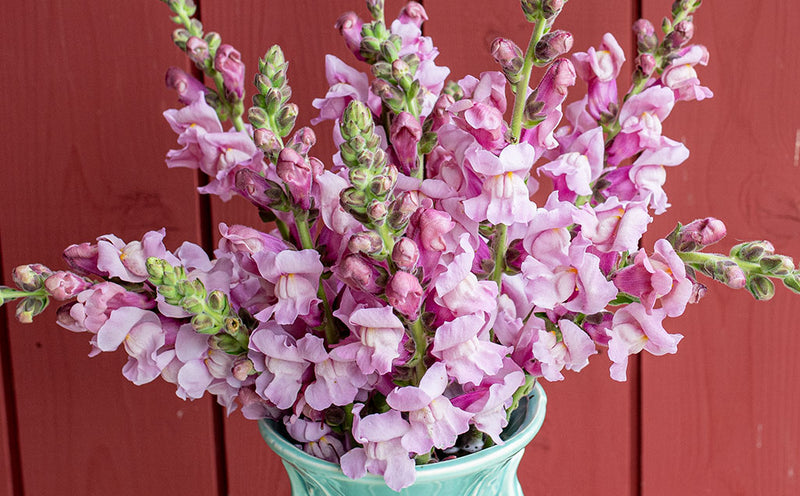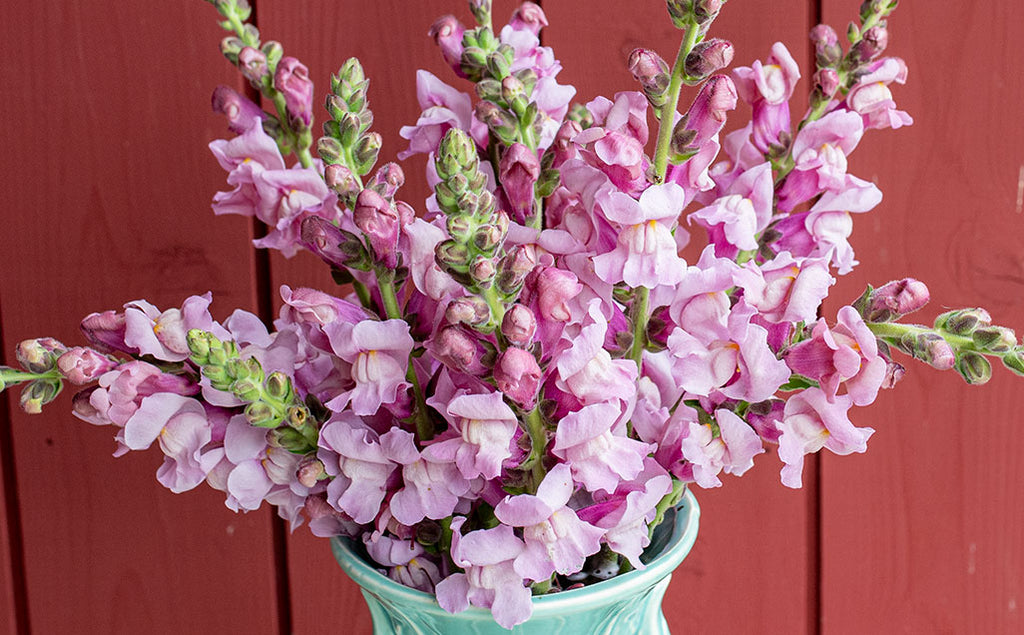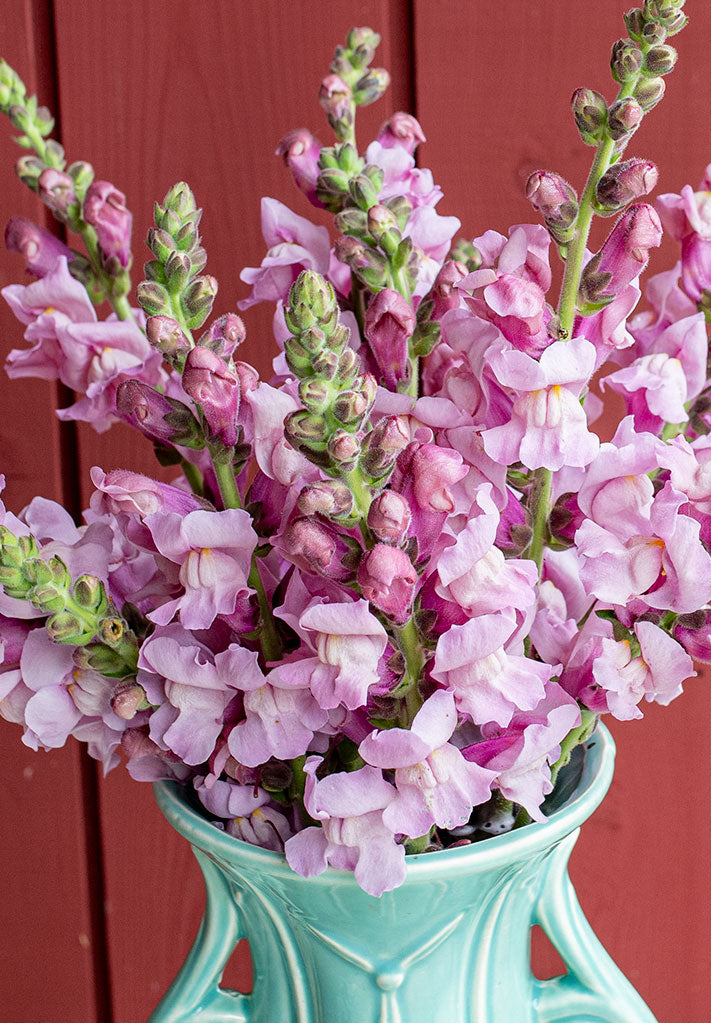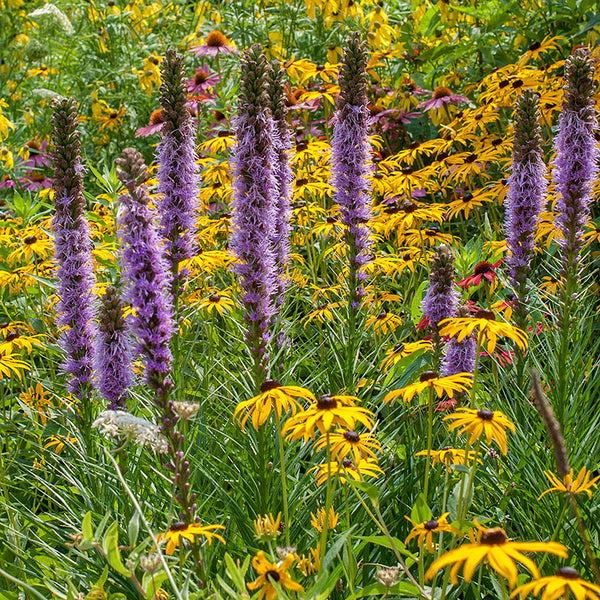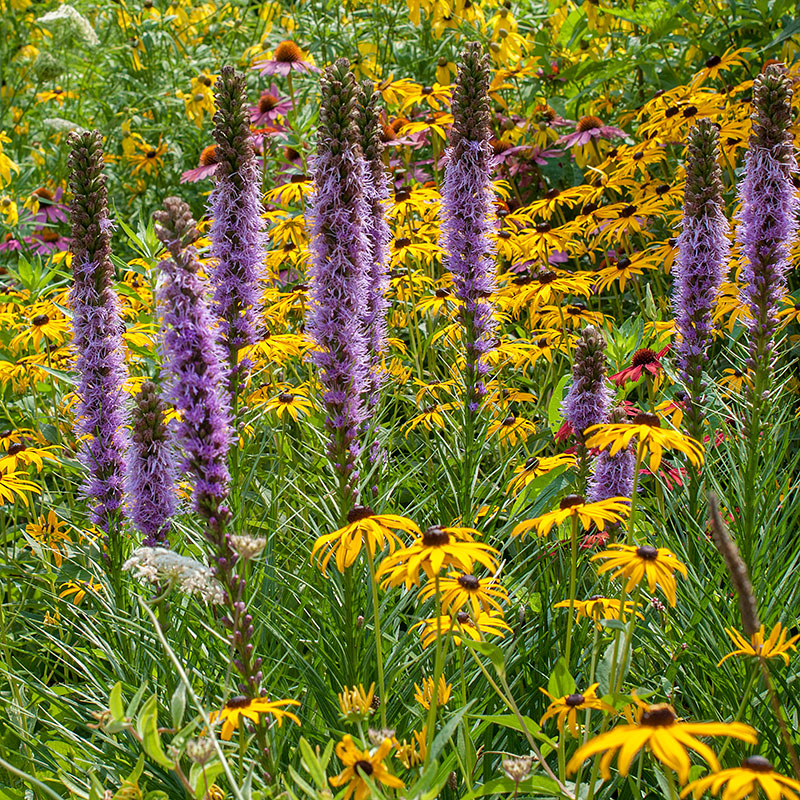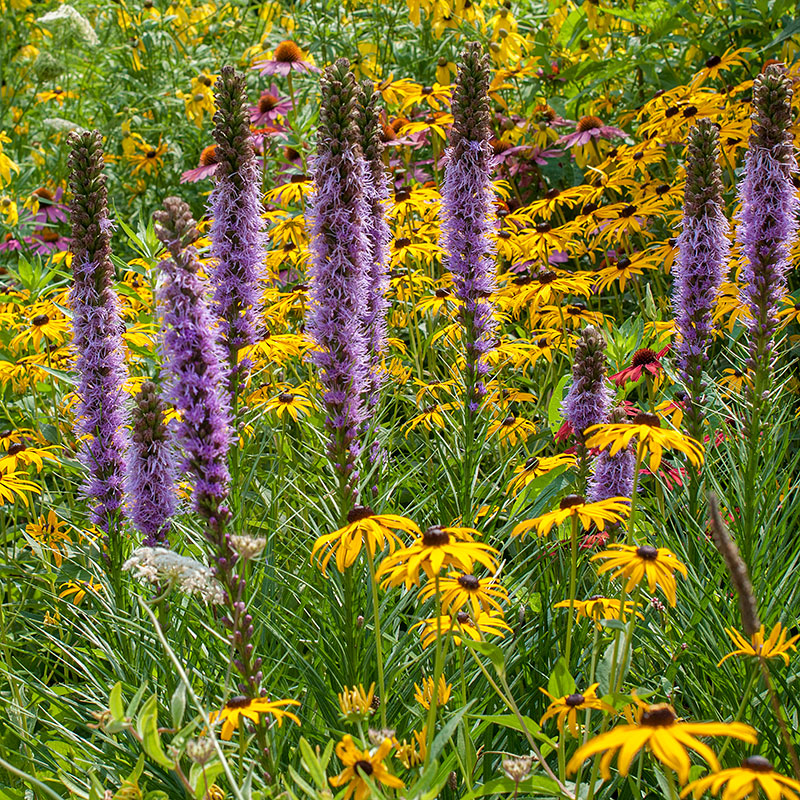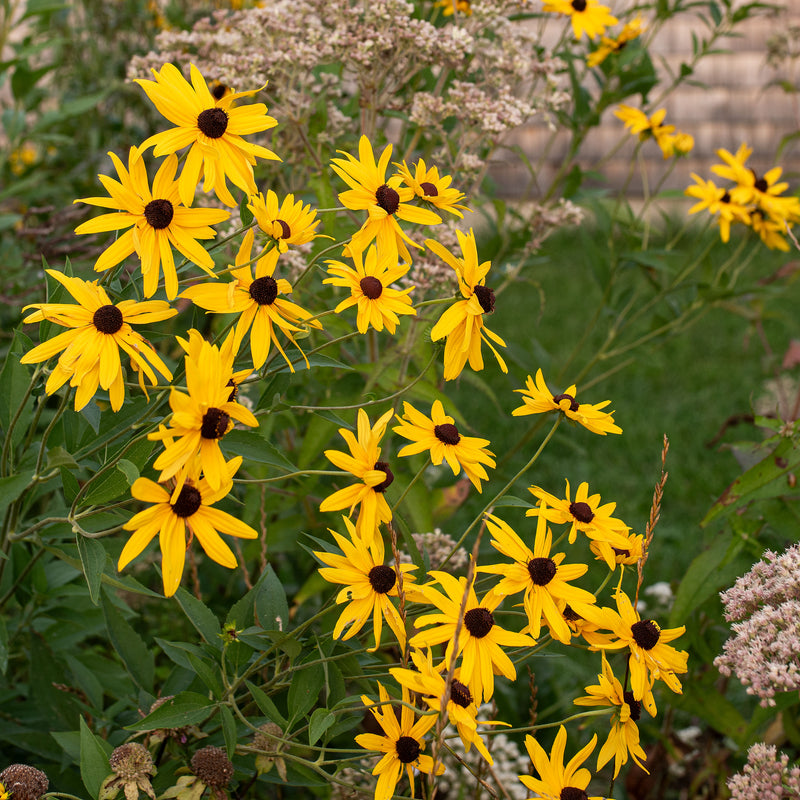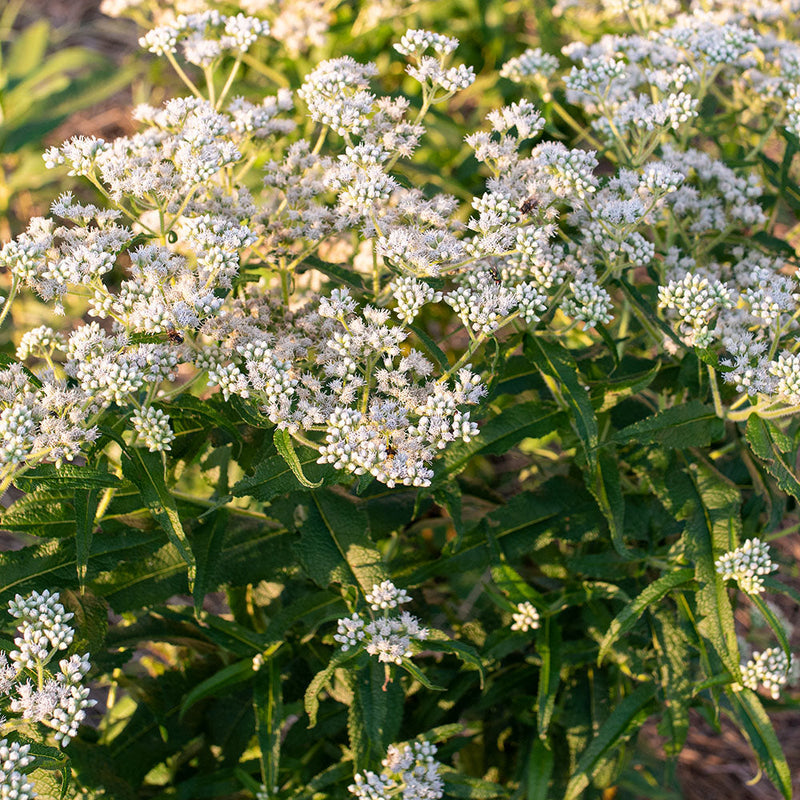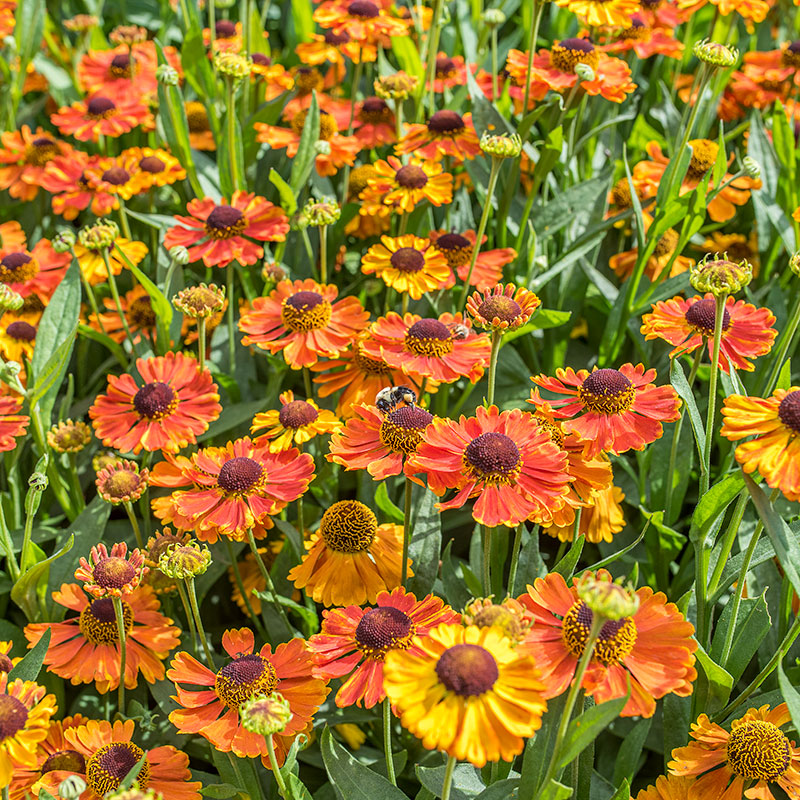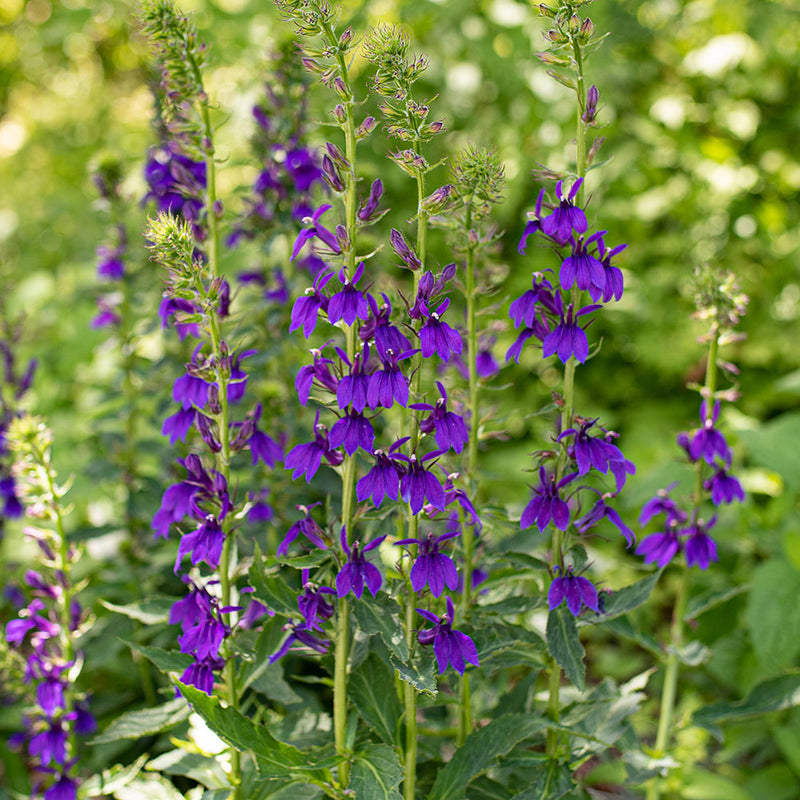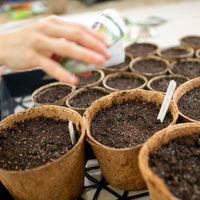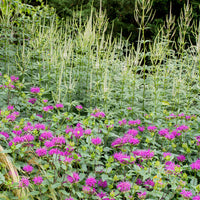SOWING INSTRUCTIONS
Starting Indoors:
Stratify for 30-60 days. Sow in a container, cover with a plastic bag and refrigerate, or mix seed with damp clean sand or vermiculite, bag, and refrigerate at 35-40°F. Check often for germination and maintain a lightly moist medium. Transplant any seedlings as they germinate. After the chill period, sow into soilless media and keep at 65-70°F.
Starting Outdoors:
Direct sow in earliest spring or fall into a finely-prepared nursery bed, transplanting the following year. Or winter sow into pots in the shade, covered with a thin layer of clean sand and a wire screen to keep out mice and voles. Check for moisture at regular intervals.
PLACEMENT & CULTIVATION
The native blazing star attracts bees, butterflies, beneficial insects, and birds to your garden, while supplying nest sites for native bees. Gayfeather germinates erratically, making it a candidate for winter sowing when moist stratification can occur over time with little input. Like many perennials, they take several years to mature and flower abundantly. To promote rebloom, cut back by one-half after flowering. Knobby corms develop, and offsets can be separated to create showy stands of flowers in rain gardens and meadow plantings.
Watering Details:
Keep evenly moist until well-established. Moderately drought tolerant, water during extended dry periods and provide excellent winter drainage.
Soil pH:
Most pH levels are tolerated.
Fertilizer:
Apply a thin layer of compost when transplanting and yearly thereafter in early spring—excessive fertilizing will cause flower stems to bend, requiring support.
Diseases & Pests:
Occasionally susceptible to rust; prevent with proper spacing and also by preventively spraying with an organic fungicide every two weeks or so, depending on local weather conditions. Planting in a location that gets good air circulation is also helpful.
When to Cut for Bouquets:
Harvest when half of the florets have opened.
